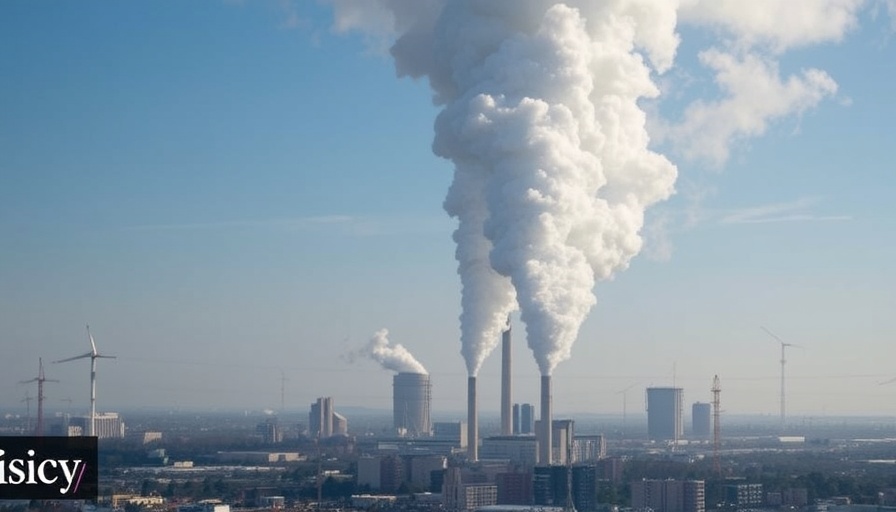
The Rising Stakes of U.S. Greenhouse Gas Emissions
The alarming trajectory of greenhouse gas pollution from the United States has recently raised global concerns, marking a significant potential setback in climate change mitigation efforts. According to a report by the Rhodium Group, an abrupt shift in U.S. energy and climate policy under the renewed Trump administration has already begun to compromise the country's ability to meet emission reduction targets. This shift, characterized as the most drastic change in recent memory, could not only hinder U.S. progress but also exacerbate the global climate crisis by increasing overall emissions.
Understanding the Impacts on Global Emissions
The forecast from Rhodium reveals that U.S. emissions could see a reduction of merely 26% to 35% by 2035 when compared to 2005 levels. This figure represents a significant decline from last year's projections, which estimated a reduction of between 38% to 56% by 2035 during Joe Biden’s term. The difference in these estimates illustrates a troubling trend, as it indicates the U.S. is now projected to fall drastically short of its commitments under the Paris Agreement aimed at limiting global warming to avoid catastrophic climate impacts.
The Policy Landscape and Its Consequences
Since Donald Trump returned to the presidency, a “drill, baby, drill” approach has been reinstated, leading to the opening of vast areas for fossil fuel extraction and a deregulatory spree aimed at limiting greenhouse gas emissions. The implications of such sweeping changes are profound; Ben King of Rhodium articulates that the current emission trajectory reflects a significant downturn in decarbonization efforts, which could obstruct progress made over the last two decades. With the forthcoming UN climate meeting in Brazil approaching, the urgency for governments to reevaluate and enhance their climate strategies becomes imperative.
Lessons from Other Nations: The Global Green Energy Shift
Meanwhile, countries focused on renewable energies, such as China, are showcasing the potential benefits of steering away from fossil fuels. China's commitment to green energy has positioned it not merely as a participant but as a pivotal leader in the global shift towards sustainable energy solutions. As nations like China continue to innovate and invest in clean technology, the U.S. risks being left behind, potentially transforming its role in the global economy and its capacity to combat climate change.
What This Means for Homebuyers and Investors
As homebuyers, sellers, and property investors, the implications of rising greenhouse gas emissions extend into the real estate market. The demand for homes that incorporate sustainable practices is surging, with eco-friendly designs taking center stage. Today's buyers are increasingly looking for residences that not only appeal aesthetically but also promote environmental responsibility through energy efficiency and sustainable materials. A failure to embrace these trends could lead to diminished property values and deter environmentally-conscious buyers.
Decisions You Can Make Today
For homeowners and investors, understanding the direct consequences of climate change on the housing market can guide better purchasing decisions. Investing in properties with energy-efficient systems, renewable energy, and sustainable materials may not only enhance living standards but also increase long-term value. The time to adopt sustainable initiatives in real estate is now, as they are not merely a trend but a necessity in the fight against climate change.
Final Thoughts: The Role of the Individual
At this juncture, the individual has the power to influence the climate debate. By advocating for transparency in energy policies, supporting green initiatives, and opting for sustainable practices in everyday life, each person contributes to a larger fight against increasing greenhouse gas emissions. This collective effort is essential for steering the U.S. back on track towards meeting its climate targets and ensuring a healthier planet for future generations.
To secure a sustainable future for your home and the planet, consider making eco-friendly updates and explore energy-efficient options. Being an informed property investor not only benefits your wallet but also contributes to a more sustainable world.
 Add Row
Add Row  Add
Add 





Write A Comment